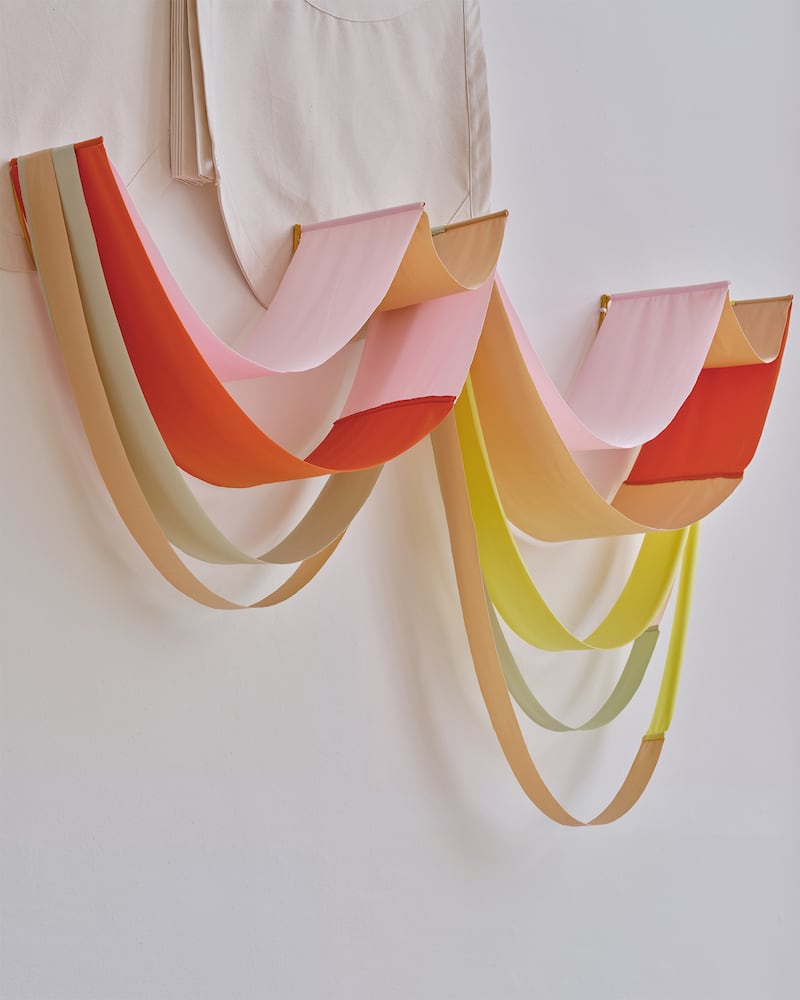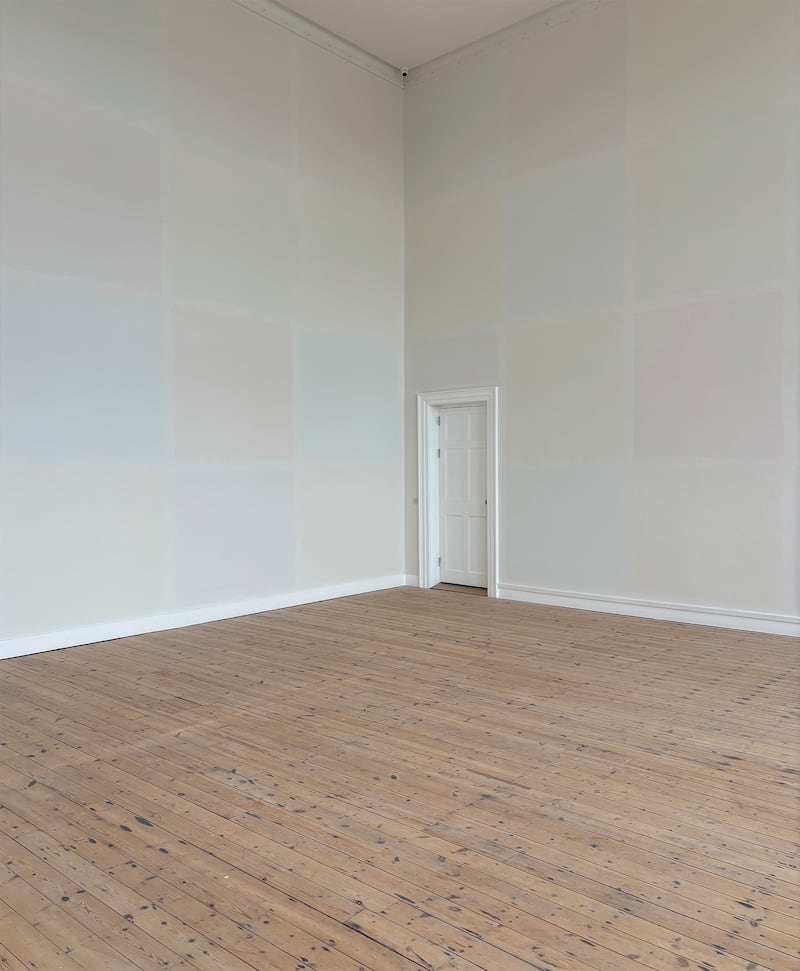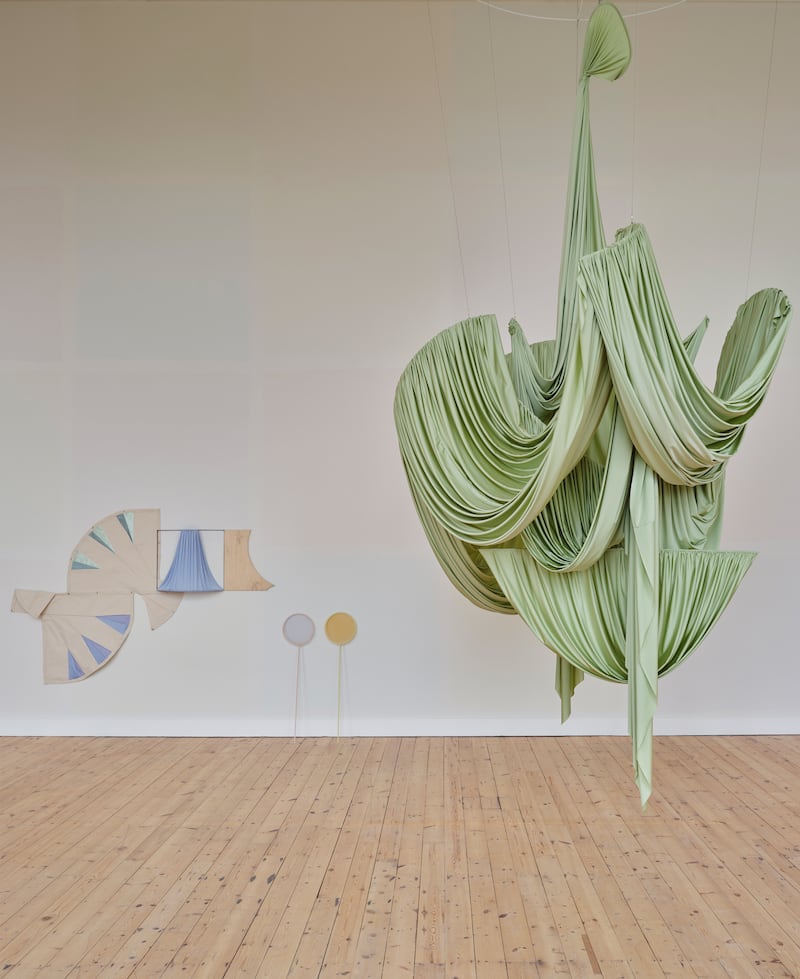This weekend Richard Malone’s exhibition A Record of Tenderness came to the end of its run at the Dock arts centre in Carrick-on-Shannon, in Co Leitrim. Its sculptural installations, which consist of textiles supported by light steel frames, marked another evolution for one of the most important Irish artists working today.
Malone, who would rather be much more low-key about such assessments, was celebrated initially across the fashion industry. But they have always been an artist first – as galleries and museums spotted from the get-go. Their work has been exhibited at the National Gallery of Ireland and been bought by the Museum of Modern Art and the Metropolitan Museum of Art in New York, as well as by the Victoria and Albert Museum in London. Malone, who is from Wexford, also curated Making and Momentum, an exhibition on Irish modernism in conversation with the work of Eileen Gray, that was shown at E-1027, her famous house in Roquebrune-Cap-Martin, in France, before touring.
At the Dock, Malone worked with their father to paint faint colour samples on the wall, investigated the history of labour in the Dock building and thought deeply about how so much labour – in the fashion industry, in galleries – goes uncredited. “I’m always in the process of thinking about stitch, about our limitations of language in terms of national identity, and being mindful of taking a show or work that’s about the things my work is about to a place in rural Ireland,” Malone says. “That feels important to me.”
Malone, who is speaking from their studio in Hackney Wick in London, became “hyperaware” of being working class when they moved to Britain; being “fetishised as the ‘working-class one’” in interviews was an odd experience, they say, especially when their identity was edited. “If I spoke about queerness in my work – the garments were so androgynous; they were all made on my body – the process of fashion editors or whoever editing that part of it out so they could promote a different part of my identity was very confusing for me.”
Malone’s enchanting work has a magnetic pull. The way material is folded and the way it flows, drapes and stitches together can result in its ultimate form feeling predestined. The sculptures feel alive and utterly contemporary, yet loaded with history and ghosts, subtexts of queer bodies and untold lineages rising through their pores.
Earlier this year, when Malone’s pieces were exhibited at the Met to coincide with its annual gala, one of the biggest nights in celebrity-driven fashion, they skipped the party. “I’d be overwhelmed. Even the opening was just so … I don’t want to say unnecessary, but it is kind of unnecessary … I think I’m in enough of those institutions now to know what the jig is. It’s lovely. It’s great. It’s also strange. I try to let it happen and not make it be the vessel.”
When Malone was younger, MoMA representatives flew to Malone’s then studio and living space in London to purchase work. “It was an absolute kip, a cats-in-the-shower sort of warehouse thing. I had to rake all this stuff out and show them.”
The buyers’ approach was that artists’ work “was important for a collection – after you’re dead”.
“I was, like, ‘Oh, that’s strange.’ That was a real I’m-kind-of-on-to-something moment, without [my] yet being able to articulate what that thing was – maybe I still can’t. It’s an experiment that continues … They were going on about the significance of Russian constructivism and all these things, and I was, like, ‘I haven’t heard of any of this until you’ve come into my studio and told me!’”



Malone’s dislike of fame might be down to unenjoyable early experiences in the spotlight. Yet their aversion appears increasingly common among young Irish artists. “For me it’s the biggest luxury in the world to be able to make work that’s free of that,” Malone says. “I think when you let that in it freezes who you are.
“People sometimes ask me who a really influential Irish artist is, or who has really rewritten the rulebook. Well, Enya. It’s f**king Enya. She … She is the one. She is the person who came in and tore it apart. I think she’s the standard. Do the best work you can do, quietly. Be grateful that you do it, live your life and let [that and your public profile] be separate.
“There’s a part of me that wants to be able to recognise when it’s enough, because there’s a lot of pressure from external people – ‘You can capitalise on this,’ ‘You can turn this into something,’ ‘You can do a brand partnership,’ ‘You can do a Volkswagen ad.’ Why would I do that? Why would I spend a day I have off doing that? I feel very lucky. I don’t come from money, so I don’t have that as a standard. There was never a pressure to be a high earner or buy a big house, so that’s not in my sightline at all.
“I don’t see that as success. So I think it’s about rethinking what success actually is, and maybe being more attuned to the feeling of it. You don’t have to do every opportunity. There’s a lot of things I’ve said no to that I’m very grateful I said no to at the time. I don’t take it lightly.
“It’s such a luxury to get to make abstract sculpture and installations, and for that to be your job. That’s a world away from where I thought I’d land. So I’m just happy about that. I don’t want to be doing your hashtaggy things. People who were really good writers became really bad influencers. For me, you only really have your work and what that says on its own.”
[ From the archive: Enya breaks her silence on fame, privacy and musicOpens in new window ]
Malone lives by a remark of Patti Smith’s: “She said her only intention is to keep a good name and to do good work. I think that’s true and sincere.”

